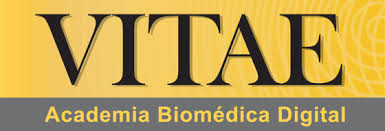Identificación de aislados de Acanthamoeba spp mantenidos en el laboratorio de amibiasis-UCV, mediante PCR-RFLP
Palabras clave:
Amibas de vida libre, Acanthamoeba spp, PCR-RFLP., Free living amoebaeResumen
Dentro del género Acanthamoeba existen especies relacionadas con patologías presentes en los humanos. Su identificación y clasificación se realizaba por morfología, pero es subjetiva y de baja sensibilidad y especificidad. Por ésto, es importante incorporar herramientas de biología molecular. El objetivo de esta investigación fue caracterizar molecular y morfológicamente 24 aislados de Acanthamoeba, mantenidos en el Laboratorio de Amibiasis-Escuela de Bioanálisis-UCV, mediante PCR-RFLP (HinffI, HhaI y HaeIII), previamente identificados morfológicamente como Acanthamoeba (Pussard y Pons 1977). Ningún aislado perteneció al grupo I. De los 24 aislados, 45,8% presentó características morfológicas compatibles con el grupo II, 45,8% con el grupo III y 8,4% con ambos grupos. Molecularmente, 50% de los aislados amplificaron productos de 900 pb y 50% de 700 pb. Los aislados del grupo III, no se pudieron caracterizar molecularmente por PCR-RFLP, ya que el patrón de digestión no coincidió con patrones previamente publicados. Solo se identificó el 33% de los aislados resultando: A. polyphaga (A9, A12, A13, A14), A. castellanii (A26, A27, A28 y A29) y A. castellanii o A. polyphaga (A15, A25 y A30). Las especies identificadas coinciden con las patógenas más comúnmente descritas en la literatura.
Title
Identification of Acanthamoeba spp. isolates maintained at the amibiasis laboratory of Universidad Central de Venezuela, USING PCR-RFLP
Abstract
Acanthamoeba genus includes some species related to pathology in humans. Their identification and classification was made by morphology, but it is a subjective technique and has low sensitivity and specificity. For these reasons, it is important to incorporate molecular tools. The objective of this research was to characterize morphologic and molecular features of 24 Acanthamoeba isolates, maintained at Laboratorio de Amibiasis-Escuela of Bioanálisis-UCV, previously identified as Acanthamoeba, using light microscopy and morphological criteria according to Pussard and Pons, 1977 and PCR-RFLP (HinffI, HhaI and HaeIII) respectively. Morphologically, none of the strains belonged to group I. 45.8% of all isolates presented compatible morphology with Group II, other 45.8% with group III and 8.4% with both groups. Molecularly, 50% of the isolates amplified a 900 pb product and the other 50%, a 700 pb product. Isolates of Group III could not be molecularly characterized by PCR-RFLP, since the digestion pattern have no coincidence with previous reports. Only 33% of strains were finally identified: A. polyphaga (A9, A12, A13, A14), A. castellanii (A26, A27, A28 and A29) and A. castellanii or A. polyphaga (A15, A25 and A30). The identified species are consistent with the most common pathogens described at the literature. Key words: Free living amoebae; Acanthamoeba spp; PCR-RFLP.

